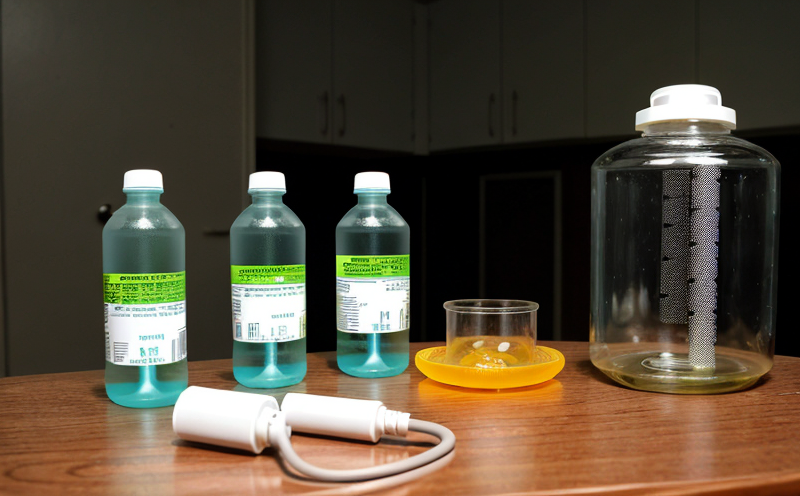EPA 921 Uranium 234 Determination Test in Water
The EPA Method 921 is a critical standard protocol designed to determine the concentration of uranium-234 (U-234) in water samples. This test is essential for monitoring and ensuring compliance with regulatory limits set by environmental protection agencies across the globe, particularly in regions facing potential contamination from nuclear waste or industrial processes.
The primary purpose of this method is to identify and quantify U-234 levels in drinking water supplies, surface waters, and wastewater. The presence of uranium isotopes like U-234 can pose health risks if present above certain thresholds. This test helps utilities, regulatory bodies, and research institutions to monitor these levels accurately.
The analytical process involves several steps: sample collection, preservation, digestion, separation, and finally, the determination of the isotopic concentration using mass spectrometry techniques. The method is sensitive enough to detect very low levels of uranium, making it a reliable tool for monitoring compliance with international standards such as ISO 17025.
For accurate results, the sample must be properly collected and preserved before analysis. This involves ensuring that the sample does not degrade or react with other substances during transit or storage. Proper digestion is crucial to convert the uranium compounds into a form suitable for mass spectrometry.
The test's accuracy and precision are ensured by following strict procedural guidelines outlined in EPA Method 921. These include calibration of instruments, quality control checks, and validation against certified reference materials. The method also includes specific criteria for acceptance, ensuring that results are reliable and reproducible.
The data generated from this testing is used to make informed decisions about water treatment processes, regulatory compliance, and public health. By adhering to EPA Method 921, laboratories can ensure they meet stringent quality assurance standards such as ISO/IEC 17025:2017.
Understanding the context of this test is crucial for those involved in water quality management or environmental protection efforts. The method's sensitivity and specificity make it an indispensable tool in safeguarding public health and ensuring compliance with environmental regulations.
Customer Impact and Satisfaction
- Enhanced Compliance: By adhering to EPA Method 921, water treatment facilities ensure they comply with strict regulatory standards.
- Improved Public Health: Detecting U-234 helps in safeguarding public health by ensuring that water supplies are free from harmful contaminants.
Competitive Advantage and Market Impact
- Regulatory Compliance: Facilities that can demonstrate compliance with EPA Method 921 enjoy a competitive edge over those that do not.
- Customer Trust: Demonstrating adherence to this stringent method builds trust among customers, stakeholders, and regulatory bodies.
Use Cases and Application Examples
| Application Example | Description |
|---|---|
| Detecting Uranium in Drinking Water Supplies | This application ensures that drinking water meets regulatory standards, protecting public health. |
| Monitoring Surface Waters for Contamination | This helps identify potential sources of contamination and take preventive measures. |
| Evaluating Wastewater from Industrial Processes | This ensures that industrial practices do not lead to environmental degradation. |
| Researching Uranium Isotopic Ratios in Environmental Samples | This aids in understanding the natural and anthropogenic sources of uranium isotopes in the environment. |





